Turkey March 2020
By David Broek, Alfred Kok & Remco Ploeg
Winter time usually is not the best time to do any herping in our own country. Longing to some intensive herping again, we were looking around for an interesting destination in winter. As salamanders are always a good choice, we decided to visit one of the two countries being home to the terrestrial genus Lyciasalamandra. Given the higher number of species and subspecies, in combination with some other herpetofauna, we chose for a visit to Turkey. After the tickets were booked we compiled an itinerary including all Turkish Lyciasalamandra ssp and some other Urodeles.
Early in the morning we met at a parking close to Düsseldorf Airport. With one car we continued to the airport. After following the whole check-in procedure we waited at the gate. But the gate number on our ticket did not correspond with the number on the information screens. So, after some more people moving we decided to do the same. At another gate we waited but saw again another gate number on the screens. So we hurried to that gate and saw more people clearly waiting for a flight with destination Turkey. Unfortunately the hurry was unnecessary as the flight was delayed for an hour. Somewhat later than expected we arrived at the airport in Antalya and started searching for our car rental, that couldn’t be found next to the other companies. After finding a phone number somewhere hidden in one of the many emails we called them and a guy came to pick us up. Soon after we were driving on the busy roads without traffic rules to the west side of Antalya. We dropped our luggage at the Flamingo Residence and continued to a contact zone between the first two Lyciasalamandra: L. billae billae and L. antalyana antalyana. Flipping stones at dusk soon resulted in an individual with characteristics of both species.
After jumping from antalyana to billae territory, we continued our search with flashlight. This resulted in two other individuals walking around, including a male L. billae billae. Also some Pelophylax bedriagae were seen in the brook. Because Remco was not feeling well and Alfred and David were feeling hungry, we went back to the hotel and Alfred and David were having dinner at a restaurant.
Hybrid Lyciasalamandra billae x L. antalyana
Bay Lycian Salamander (Lyciasalamandra billae billae)
Pelophylax cf. bedriagae
Next morning we still hadn’t seen L. antalyana antalyana, so we searched at a random but promising site close to the hotel. In a matter of time we found two individuals and also some other herps: Anatolian worm lizard (Blanus strauchi) and Eastern green toad (Bufotes sitibundus). These two Lyciasalamandra were clearly distinct from the ones we saw the evening before.
Some Turkish policemen made it clear they cared more about local onions than salamanders, because they were almost stepping on a Lyciasalamandra while telling us we were destroying onions and we had to leave the site. Because we found our targets, we followed their orders and drove to our next stop at Göynük Canyon. After paying entrance fee as decent tourist, we walked to a valley which is the only place to find the recently described subspecies L. billae irfani. Budak’s Rock Lizard (Anatololacerta budaki) was observed basking in the canyon. When we took a small path we found some more humid places and started flipping every possible rock. It payed off, and soon we were photographing a nice specimen of the second subspecies of L. billae. After a well-deserved brunch with coffee we were full of energy again to continue to our next target; L. billae. Close to Kemer we searched at a site and started to flip everything. Finally there came a yell and we were again able to take pictures of another subspecies: L. billae yehudahi. Next to the road we also observed some Ablepharus anatolicus.
We continued to the last L. billae for today: L. billae arikani. Although the habitat seemed good and there was more than enough material to flip , no salamanders showed up. Eventually, we decided to continue because we needed the time for other Lyciasalamandra species and we already saw three L. billae subspecies. At a peninsula near Finike we had our next stop. The area looked very different from other habitats we searched for Lyciasalamandra, more like a Mediterranean maquis landscape. If we didn’t knew the species can also be found in this type of habitat, we would have continued to other, more shadowed and humid places. But luckily we did our homework beforehand, so we started flipping and that resulted in a L. luschani finikensis within a few minutes.
In Demre we checked in for our hotel. For some reason the owner wasn’t informed that we already paid for our stay with booking.com. After a (too) long phone call and a lot of excuses from the booking.com employee his suggestion was to pay at the hotel and he would refund us the money. Telling us that directly in the beginning would have saved us a lot of time. At the marina we had dinner at a small restaurant. In the surrounding we walked around a bit with flashlight just to see if we could find anything, like Chamaeleon or amphibians. When we approached a small pond we heard hundreds of Eastern tree frogs (Hyla orientalis). Finding them was slightly more challenging due to the dense vegetation surrounding the water. But finally, we could reach the edges and see many tree frogs and also Bufotes sitibundus. In the trees some Black-crowned night herons (Nycticorax nycticorax) were present.
Variable toad (Bufotes sitibundus)
Anatolia Lycian Salamander (Lyciasalamandra antalyana antalyana)
Turkish Worm Lizard (Blanus strauchi)
Bay Lycian Salamander (Lyciasalamandra billae irfani)
Budak's Rock Lizard (Anatololacerta budaki)
Bay Lycian Salamander (Lyciasalamandra billae yehudahi)
Ablepharus anatolicus
Luschan's salamander (Lyciasalamandra luschani finikensis)
Variable toad (Bufotes sitibundus)
The next morning we were ready to leave our hotel when we noticed there was some breakfast on the tables. Apparently we had complementairy breakfast, so we gladly made use of this opportunity to fill our stomachs before hitting the road. While drivingwe spotted some ruins so we made a short stop to search for some reptiles. Only Snake-eyed lizard (Ophisops elegans), a dead Greek tortoise (Testudo graeca) and a Little owl (Athene noctua) were seen. Back to the Lyciasalamandra duty! Our next target was L. luschani basoglui. At a forested area we searched, but besides more Ablepharus and Ophisops, only a live T. graeca and Ophiomorus kardesi showed up. The latter one was, despite not being the target, still a nice bonus. O. kardesi has been splitted from O. punctatissimus only two years ago (Kornilios et al. 2018). Because we had no luck with Lyciasalamandra here, we moved to another location close to the coast. Again, Mediterranean maquis. Road conditions could be better, so it was quite a challenge avoiding scratches or other damage to the car. After some flipping, we found a nice individual of this subspecies. Also some Mediterranean house gecko (Hemidactylus turcicus) and Ophisops. Near the car we heard something rustling in the vegetation, and as we slowly moved closer we found out it was an Testudo. After a photography-session, we took the small, rocky road back to the asphalt. Suddenly, we heard a strange sound produced by the car. At the same moment we also saw a Hardun (Laudakia stellio), undoubtedly uncorrelated with the sound but enough reason to stop the car and check both coincidences. Checking the car’s front wheel showed a flat tire, not very surprising with this road conditions. Luckily Alfred changed the tire in a blink of an eye, and we could continue our journey to the west. Of course, with a maximum speed of 80 km/h as the spare tire indicated. We still had one subspecies of L. luschani to find, so we navigated to a location near a ruin. Here it took quite some time, but finally a L. luschani luschani was found underneath a pile of rocks. The usual abundance of Testudo and an astonishing view on the old rock tombs made the experience complete. It was time to move northwest, in direction of our AirBnB in Köyceğiz. Finding it had to be done with use of some pictures of the AirBnB website, because we didn’t had an address. But finally we found it and were welcomed by our hosts in the roomy apartment with even two bathrooms just for the three of us! At the atmospheric boulevard of the village we had a tasteful dinner. After dinner, we checked out a marshland next to the lake Köyceğiz Gölü. We were hoping to find some Spadefoot toads (Pelobates syriacus) but we found some more usual Balkan pond turtle (Mauremys rivulata), Pelophylax and Hyla. Using Google Maps, we saw some ponds next to an orange orchard. We drove to the place, went through the orchard, but the pond didn’t turn out to be very interesting so we went home to have some sleep for the long day tomorrow.
Snake-eyed lizard (Ophisops elegans)
Ophiomorus kardesi
Luschan's Salamander (Lyciasalamandra luschani basoglui)
Luschan's salamander (Lyciasalamandra luschani luschani)
Balkan pond turtle (Mauremys rivulata)
Next day we left early for the 3-hour drive to the famous ancient city Ephesus. Of course, we also wanted to do some touristic sightseeing, learning more about the history of this place, being surrounded by hundreds of Asian tourists. Of course, we also wanted to book a guided tour to avoid missing anything and listening to a boring tour guide for hours. Of course, we wanted to spend hours in the gift shops afterwards to buy some ugly souvenirs. It was all worth driving the long distance northwards, even when there was some traffic jam due to an accident. At the entrance of Ephesus, our bags were checked and David was told he was not allowed to use his softbox tripod, because that would be ‘professional photography’ which was forbidden within the site. He promised not to use it for photographing the ruins (truth!), and because we are such trustworthy fella`s they let us in. When looking at some nice historic stones, Alfred accidentally touched one and it flipped over. A subadult European glass lizard (Pseudopus apodus) was underneath, what a coincidence! Also some Blanus strauchi, Testudo and Ablepharus. Because the signs were not very clear we got 'lost' somewhere in the harbour gymnasium and suddenly were looking at some dried up puddles with a pile of rocks. Only flipping a few of them already delivered a Balkan crested newt (Triturus ivanbureschi). We started flipping more and also the other targeted urodele showed up: Schmidtler’s smooth newt (Lissotriton schmidtleri). When we were photographing the newts, a man collecting mushrooms showed up and moved closer and closer towards us. When he was really close he finally saw us and asked what we were doing here. He didn’t care about our presence so after a short talk he disappeared again. Shortly after that hecame back. He told us that if they catch you in this area without authorisation you go to jail. Apparently we walked into an area belonging to the Turkish military. To support his warning, he made a gesture like he was chopping off his hand. We didn’t knew much about Turkish habits in jail, and we were keen to keep it like that, so we left the place quietly. After blending in with the groups of tourist again, we had lunch in Ephesus and then left the historical site. Note: we care about both natural and historical heritage, therefore only rocks that were clearly not part of the ruins were flipped to avoid causing any damage to the site.
Because we had some time left, we drove to an interesting looking site on the map nearby. We searched again for Pelobates, but only found Pelophylax, Hyla and Mauremys again. More interesting was the observation of several Grass snakes (Natrix natrix persa), of which one regurgitated a Lissotriton schmidtleri. Also a Balkan green lizard (Lacerta trilineata) was seen. After some more Hyla at another pond, we drove back southwards. We had dinner at a big roadside Köfte restaurant. Close to Muğla we made a stop to search for Lyciasalamandra flavimembris ilgazi. It didn’t take too long before David found a subadult underneath a rock. With the thousands of lights from the nearby city in the background we took some photos. With this taxon in the pocket, we felt like we could also give the nominat subspecies of L. flavimembris a try. So we drove southwards, to a site in a forest. This one turned out to be somewhat more challenging but after searching for more than an hour Remco found an adult female. At 01.00 we were back at the AirBnB.
Blanus aporus
European Glass Lizard (Pseudopus apodus apodus)
Southern crested newt (Triturus ivanbureschi)
Lissotriton schmidtleri
Marmaris Lycian salamander (Lyciasalamandra flavimembris ilgazi)
Marmaris Lycian salamander (Lyciasalamandra flavimembris flavimembris)
The next morning we had some difficulties waking up early, so we started relatively late. First, we went to the Dalyan river to see if we could find some turtles. Observations of sea turtles in the river seemed quite common. Unfortunately, we couldn’t find them in the river, so we went to some thermal springs nearby. Scanning the banks delivered an African soft-shelled turtle (Trionyx triunguis). When we came closer, it disappeared but we saw quite some other turtles swimming in the steaming and smelly water. Also some Spur-winged Lapwings (Vanellus spinosus) were seen, besides some Phelophylax and freshwater crabs (Potamon rhodium). Up next, we went to a swampy area near the lake Kocagöl. We saw lots of fishs in the small streams and used a dipping net to catch some. Most of the fish were cichlids (Tilapia zilli), but we also caught some mosquito fish. Walking the muddy banks only delivered a lot of Pelophylax and some Lacerta trilineata. When continuing our drive, we saw a very interesting-looking gorge. We stopped and started flipping. Within one minute Alfred found a Lyciasalamandra fazilae ulfetae underneath some roofing tiles. The color on these creatures was absolutely stunning. A little bit more flipping in this beautiful gorge resulted in two more adults and a subadult. Sometimes herping can be so easy! Also a lot of Crag martins (Ptyonoprogne rupestris) were present. To our surprise, we also found fresh water crabs quite high in the hills. They are known to forage on Lyciasalamandra here. We followed the road until we came across a small remote beach. Underneath some construction waste we found another Lyciasalamandra of the same subspecies, only a few meters from the sea shore! Also some Ablepharus were found. Due to the taxonomic chaos that is going on with regard to this genus, we can’t label any species name. They most probably are either A. anatolicus or a yet undescribed species. After this it was time to get something to fill our stomach, so we went back to Köyceğiz to have dinner. After dinner we went to a more forested area to look for Lyciasalamandra fazilae fazilae. Because it was relatively dry, our strategy was mostly flipping every possible rock in sight. Also some rock walls were carefully re-arranged. After two hours of non-stop flipping, we started to lose our hope of finding this nominat subspecies a bit, but out of nowhere there was some fog. The humidity was giving us new hope so we walked a bit further and continue our the non-stop flipping. Then suddenly, David saw a small head peeking out of a little hole. It wasa Lyciasalamandra pondering if he would go outside tonight or not! With some combined strengths, we were able to catch it before it disappeared back into its hole. This must have been the longest continuous search we had during our the trip. Driving home through the very helpful clouds, was very atmospheric.
African soft-shelled turtle (Trionyx triunguis)
Gambusia
Fazil Lycian salamander (Lyciasalamandra fazilae ulfetae)
Ablepharus sp. , exact species unknown
Fazil Lycian salamander (Lyciasalamandra fazilae fazilae)
The next day was meant to spend on the more nearby archaeological site of Kaunos. Again we were a little bit slow in the morning, still tired from last night. On the route we did some short stops, resulting in a new specie: Anatololacerta pelasgiana. The usual suspects, like Testudo graeca, Mauremys rivulata and Pelophylax were also seen in the vicinity of a pond. Even the road signs were interesting enough for a herpetologist to make a stop. We implemented some Dutch waste sorting habits, while investigating a pile of building garbage. The owner, while confusingly watching us, didn’t sound like he was very thankful for our help. But he tolerated it, after we showed him some pictures of salamanders while pointing at his garbage. The Laudakia, Bufotes and Lesser White-toothed shrew (Crocidura suaveolens) that showed up weren’t thankful either. At the entrance of Kaunos we paid our tickets and entered the ancient city. In a big contrast with Ephesus, this place wasn’t inundated by tourists or strongly commercialised. When walking around, we saw some feathered and haired bycatch: Krüper’s nuthatch (Sitta krueperi) and Caucasian squirrel (Sciurus anomalus). A good amount of turnable rocks was more than enough to keep us entertained for some time. Blanus strauchi was a very common species. One small Asia minor dwarf racer (Eirenis modestus) showed up. Another very common sight were the tortoises, they were almost everywhere! They made very clear it was mating season; the silence at this place was roughly disturbed by the sound of mating tortoises. Another bigger sized reptile that was found, was an adult European Glass Lizard (Pseudopus apodus). This time without the barred pattern, but with a reasonable size of more than a meter. In a tree we saw a another new species for the trip: Mediodactylus danilewskii. Another new species that was found while flipping, was a Bufo bufo. We doubted whether it could be Caucasian toad (Bufo verrucosissimus) because of the aberrant colouration and the taxonomic uncertainty in this part of Turkey. New research however revealed it is just the ‘home-garden-and-kitchen’ Bufo that occurs in this region. Some coffee was a good treat to our caffeine-addiction and during this break we saw on a wooden board that Kaunos was closing at 20.00. This was a good circumstance to extend our visit a bit and try for eastern spadefoot (Pelobates syriacus) after dusk, a species that is known to breed in the artificial ponds of Kaunos. We did some more hiking, further from the ruins until sunset and then started to slowly move back. One pond looked interesting but we didn’t found anything worth mentioning in it. When we walked back to the ruins we heard someone yelling. We thought that maybe someone was calling us so we walked back to the office but saw no one there. We still could heard the yelling from another direction. Concluding it had to be some shepherd we picked up our flashlights from the car, and went to have a final stroll around the ponds. Then we saw someone walking into our direction that didn’t look really friendly. He directly started yelling at us that the park was closed already for two hours and that we weren’t allowed to walk around anymore. First, we just behaved like we were very surprised by the fact that the park was already closed (it was partially true). Then, he shouted: ‘you stay here, I call the police’. We didn’t like the prospect of having to wait for police very much. So we proceeded explaining and apologizing until we could, hopefullygo, or even worse spending the night at a police station. So, we changed our tactics and said sorry many times. He was still very angry but then finally after plenty of apologies he said: ‘get your car and leave the place, now!’, still shouting like we were stone-deaf. We got into the car and left the place with high speed before he changed his mind. Checking some other areas around Kaunos didn’t seem to be a clever idea, so we drove directly to Köyceğiz and had dinner at a restaurant. Because we had to drive a long distance next day and we had seen all our Urodelan targets in the area, we went back to our apartment. We discussed the possibilities of giving Rana tavensis a try but we came to the conclusion that even if we made it to the location despite the snow and our lack of good tires, chances to find these frogs at this high altitude in February were almost zero. We decided that the better option was to leave early and drive directly to our next Lyciasalamandra target.
Rough-tailed rock agama (Laudakia stellio daani)
Asia minor dwarf racer (Eirenis modestus)
Rough-tailed rock agama (Laudakia stellio daani)
European glass lizard (Pseudopus apodus)
Mediodactylus danilewskii
Common toad (Bufo bufo)
Leaving our apartment went smooth and it was amazing to drive from a Mediterranean maquis landscape to a winter landscape in less than an hour. More unpleasant was leaving the car for refuelling with thin clothes and our bodies not acclimatised yet. Luckily, road conditions were good and the tracks made by other cars were helpful. Because we came closer to the next Lyciasalamandra location we got a bit worried it would be also still covered with snow, a circumstance that would make finding the species almost impossible. But luckily, only about a hundred meters above the prospected altitude, we were delighted to see the snow slowly disappearing with every meter we were descending. Small mud roads and a river crossing were the next challenges, but finally we made it to the location for Lyciasalamandra billae eikae. With a temperature of 7 degrees Celsius and a freezing cold wind, circumstances were not very enjoyable. Luckily, rocks were not frozen to the soil, so we started flipping in high pace to keep warm. Remco and David both found a salamander more or less simultaneously after a while, so we ended up with an adult and subadult of this subspecies. After photographing them we got back into the car with heater on in direction of our missing L. antalyana ssp. We followed the directions of Google Maps over some small muddy roads but the conditions got worse and worse until we were facing a river crossing again. We concluded that following these mud tracks that Google considered as roads was absolutely impossible with any regular car, so we turned around. When David was driving back uphill over the steep and slippery road, Remco was searching for an alternative route. Luckily, road conditions were a little bit better here. But still, finally touching the asphalt again felt wonderful. We parked the car and walked towards a location for L. antalyana gocmeni, a very colourful subspecies. It didn’t took too long before we encountered a nice individual of this species in a small pine forest. Also a Blanus was found.
From this location we were almost in Antalya again, the starting point of our journey. For the last night we had a hotel at the eastern side of the city close to the sea. We hit the busy main road D400 again, with the strange maximum speed of 82 km/hr. After checking in, we went to the harbour to find a place for dinner. Down at the sea we saw some White-spectacled bulbuls (Pycnonotus xanthopygus). All the restaurants were totally empty as it was off season, but when we entered one, the people were very willing to serve us. With a little help from Google Translate they told us they could serve fish- and meatballs. We were curious about the combination of fish and meat, and more importantly hungry, so we agreed to this seemingly weird dish. Luckily we got baked fish and sheep meatballs separately, so we still had a tasty dinner. During dinner, we discussed our plans for the night and the idea was to drive to the closest location of L. atifi godmanni. Because it was still a 1,5 hour drive, Alfred insisted to take over the steering wheel. At the site, we parked the car in front of something that looked like a pedestrianbridge crossing the Köprülü canyon. A little bit of rain was creating the perfect condition for active salamanders. Within a few minutes we already saw a nice male out and about. After the first night, we didn’t found any active Lyciasalamandra anymore, so it was nice to find them again without flipping. It was also only our second male individual of the trip. When continuing we saw some more, also subadult, individuals, until David got a phone call from our car rental. The guy told him that the police had called them because the car was wrongly parked. We only had five minutes to get back to the car, otherwise police would remove the car. So we hurried back to the car, knowing five minutes was impossible, but luckily they gave us some extra time. Apparently the ‘pedestrianbridge’ was in fact not a pedestrianbridge but also used by (very small) cars and now it was blocked by our car. The police officers were very friendly, and apparently found it somewhat amusing to see us arriving with such haste. Because we had our target species in the pocket, we decided to drive back to our hotel.
Bay Lycian salamander (Lyciasalamandra billae eikeae)
Anatolia Lycian salamander (Lyciasalamandra antalyana gocmeni)
Atif's Lycian salamander (Lyciasalamandra atifi godmanni)
Next morning we left early for more L. atifi. On route, we checked some tire repair shops to replace our flat tire, but everything was closed because it was Sunday. Our first location was for the nominate subspecies. The place didn’t look very special with a lot of waste and was also relatively dry, but there were a lot of stones to do some morning exercise. We found some Ablepharus anatolicus. Some higher stone piles provided more humid shelters, and finally disassembling these structures led to Remco finding a huge female L. atifi atifi. This was definitely the biggest Lyciasalamandra of the trip with a length of about 18 cm. After this nice encounter we drove to a coffee bar to get ourselves caffeinated and discuss our next target. We still had four subspecies of L. atifi to find. Seeing them all was impossible, given the remaining time. Also, the status of many subspecies is still somewhat debatable. But because we were close to L. atifi veithi we did a short but unsuccessful try resulting only in Ophisops elegans. The innumerable amount of loose stones in the soil made the earth look like Dutch cheese-with-holes, giving the salamanders endless opportunities to hide themselves from us. We drove to Alanya to try finding some reptiles like Xerotyphlops vermicularis in the ruins of Alanya Kalesi. The touristic place only resulted in some more Blanus. Just before dusk we visited a location for Lyciasalamandra atifi bayrami but without luck. Because it was getting too dark to do flipping without flashlight, we left the place and drove back to Antalya. On route we stopped at a restaurant of which the owner spoke Dutch quite well to our surprise. After dinner we had a long drive back to our hotel and also stopped for a much needed cleaning session of our car.
Atif's Lycian salamander (Lyciasalamandra atifi atifi)
After a short night we left around 04.00, returned the car to the rental and were brought back to the airport. Luckily the car rental guy didn’t mind about our flat tire too much and we paid the ridiculous amount of only thirty euros for a new tire.
Exhausted but satisfied, we dozed off in the plane while counting Lyciasalamandra taxa. In about seven days, we were able to find 25 Lyciasalamandra individuals of 16 different taxa (including a hybrid) from all six Turkish species. At the moment of our visit, 21 taxa where described in Turkey, meaning we managed to tick off more than 75 percent. A recently published article however, states that many recently described taxa are not supported by genetic analyses, probably resulting in merging existing taxa and describing new taxa in the near future. A revision is however not yet given yet. Being all formally separated taxonomic units or not, seeing such a diversity in colouration in a wide variety of landscapes in just one salamander genus, was worth the effort. With the absence of rain during the major part of our visit, flipping stones proved to be a good alternative, resulting in crusty and bleeding finger tips by the end of the week. Mostly, the target species was found within an hour of searching, varying from one minute to three hours (with three men). We are pretty sure that, when ignoring all other herpetological Lycian specialties, it would have been doable to find all 21 taxa within a week. The five missed Lyciasalamandra taxa and other endemics in the region are definitely a reason for a revisit.
Species list
Reptiles
1 Greek Tortoise - Testudo graeca
2 Balkan Pond Turtle - Mauremys rivulata
3 African Soft-shelled Turtle - Trionyx triunguis
4 Rough-tailed Rock Agama - Laudakia stellio ssp. daani
5 Mediterranean House Gecko - Hemidactylus turcicus
6 Mediodactylus danilewskii
7 Budak's Rock Lizard - Anatololacerta budaki
8 Anatololacerta pelasgiana
9 Balkan Green Lizard - Lacerta trilineata
10 Snake-eyed lizard - Ophisops elegans
11 Ablepharus anatolicus
12 Snake-eyed Skink - Ablepharus kitaibelii
13 Ophiomorus kardesi
14 European Glass Lizard - Pseudopus apodus ssp. apodus
15 Turkish Worm Lizard - Blanus strauchi
16 Blanus aporus
17 Asia Minor Dwarf Racer - Eirenis modestus
18 European Grass Snake - Natrix natrix
Amphibians
1 Common Toad - Bufo bufo
2 Variable Toad - Bufotes sitibundus
3 Eastern Tree Frog - Hyla orientalis
4 Pelophylax cf. bedriagae
5 Lissotriton schmidtleri
6 Southern Crested Newt - Triturus ivanbureschi
7 Anatolia Lycian salamander - Lyciasalamandra antalyana ssp. antalyana
8 Anatolia Lycian salamander - Lyciasalamandra antalyana ssp. gocmeni
9 Atif's Lycian salamander - Lyciasalamandra atifi ssp. godmanni
10 Atif's Lycian salamander - Lyciasalamandra atifi ssp. atifi
11 Bay Lycian Salamander - Lyciasalamandra billae ssp. billae
12 Bay Lycian Salamander - Lyciasalamandra billae ssp. irfani
13 Bay Lycian Salamander - Lyciasalamandra billae ssp. yehudahi
14 Bay Lycian Salamander - Lyciasalamandra billae ssp. eikeae
15 Fazil Lycian salamander - Lyciasalamandra fazilae ssp. fazilae
16 Fazil Lycian salamander - Lyciasalamandra fazilae ssp. ulfetae
17 Marmaris Lycian salamander - Lyciasalamandra flavimembris ssp. flavimembris
18 Marmaris Lycian salamander - Lyciasalamandra flavimembris ssp. ilgazi
19 Luschan's Salamander - Lyciasalamandra luschani ssp. luschani
20 Luschan's Salamander - Lyciasalamandra luschani ssp. finikensis
21 Luschan's Salamander - Lyciasalamandra luschani ssp. basoglui
22 Hybrid - Lyciasalamandra antalyana ssp. antalyana x Lyciasalamandra billae ssp. billae
Birds
1 Chukar Partridge - Alectoris chukar
2 Laughing Dove - Spilopelia senegalensis
3 Water Rail - Rallus aquaticus
5 Little Grebe - Tachybaptus ruficollis
6 Spur-winged Lapwing - Vanellus spinosus
7 Great Cormorant - Phalacrocorax carbo
8 Black-crowned Night Heron - Nycticorax nycticorax
10 Western Marsh Harrier - Circus aeruginosus
13 Syrian Woodpecker - Dendrocopos syriacus
14 Hooded Crow - Corvus cornix
16 White-spectacled Bulbul - Pycnonotus xanthopygos
17 Eurasian Crag Martin - Ptyonoprogne rupestris
18 Cetti's Warbler - Cettia cetti
19 Wood Warbler - Phylloscopus sibilatrix
20 Sardinian Warbler - Curruca melanocephala
21 Krüper's Nuthatch - Sitta krueperi
22 Grey Wagtail - Motacilla cinerea
Mammals
1 Caucasian Squirrel - Sciurus anomalus
2 Lesser White-toothed Shrew - Crocidura suaveolens














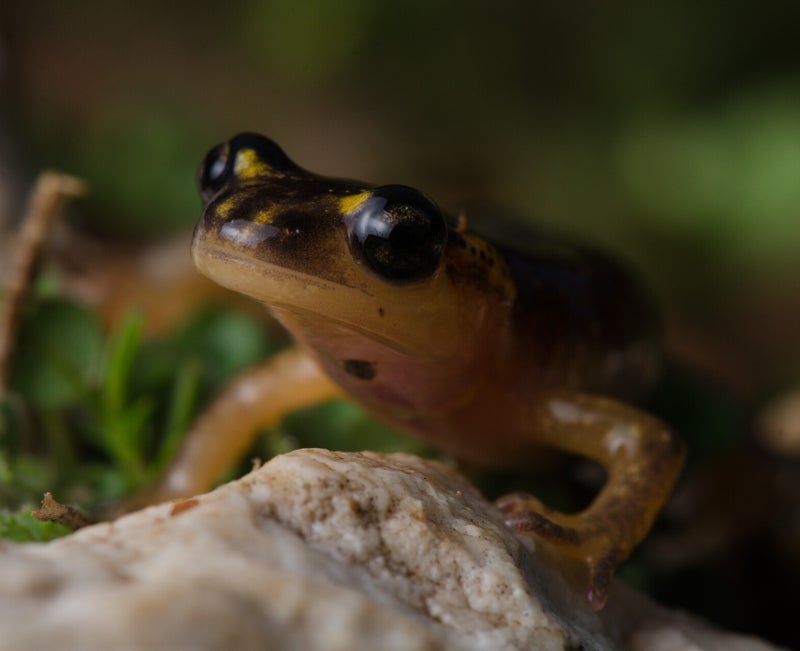












































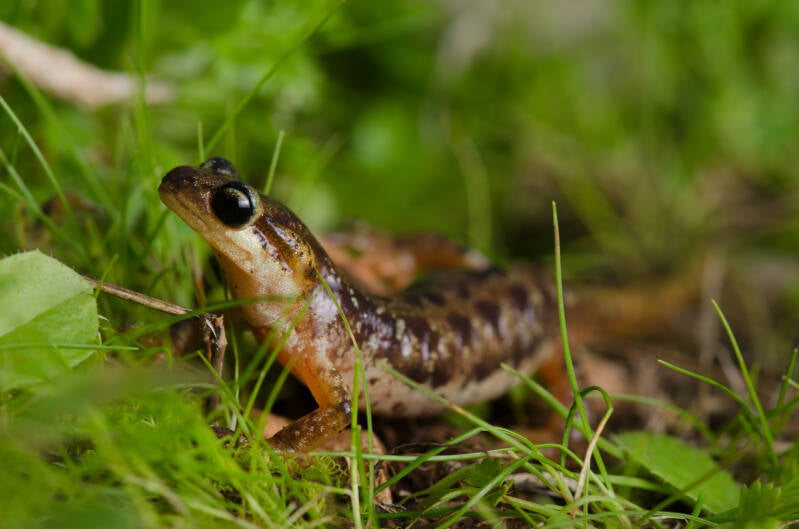





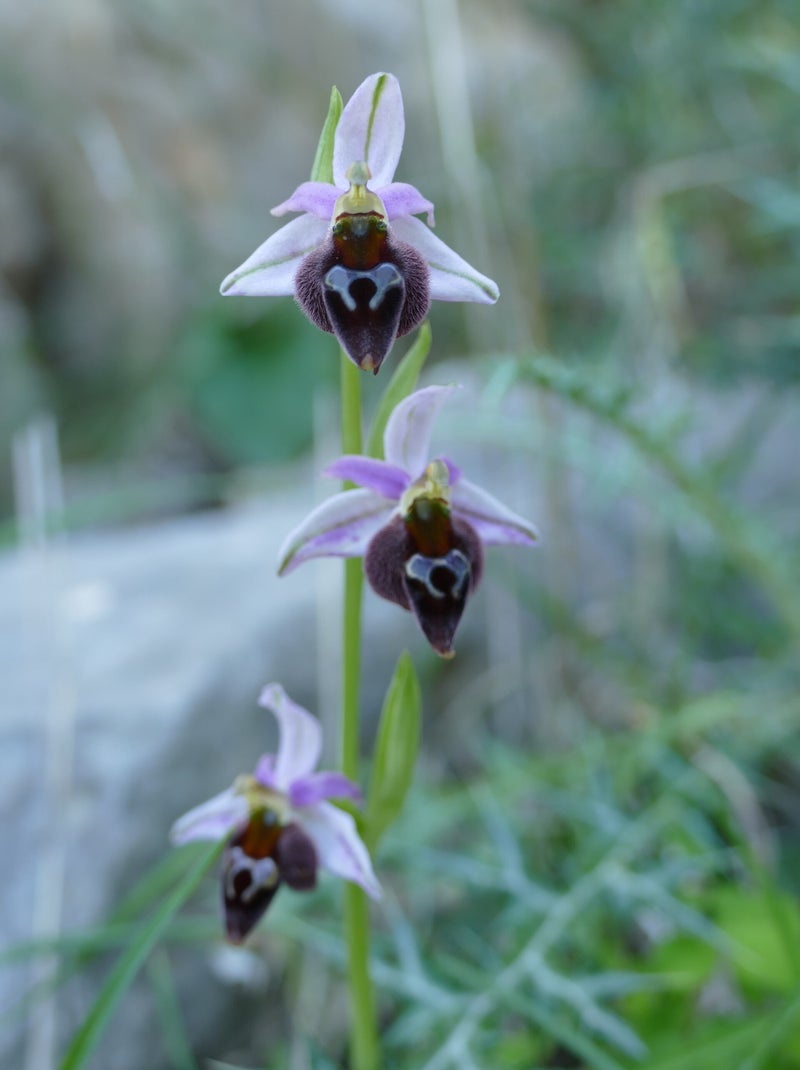















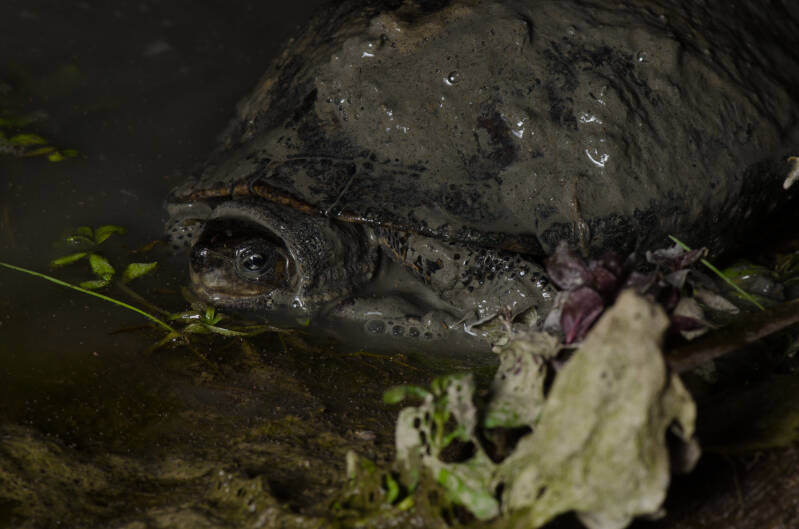














































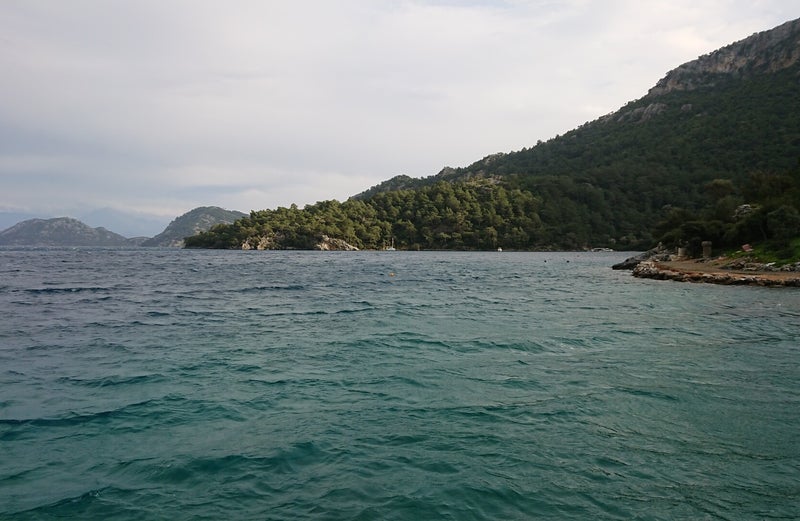






































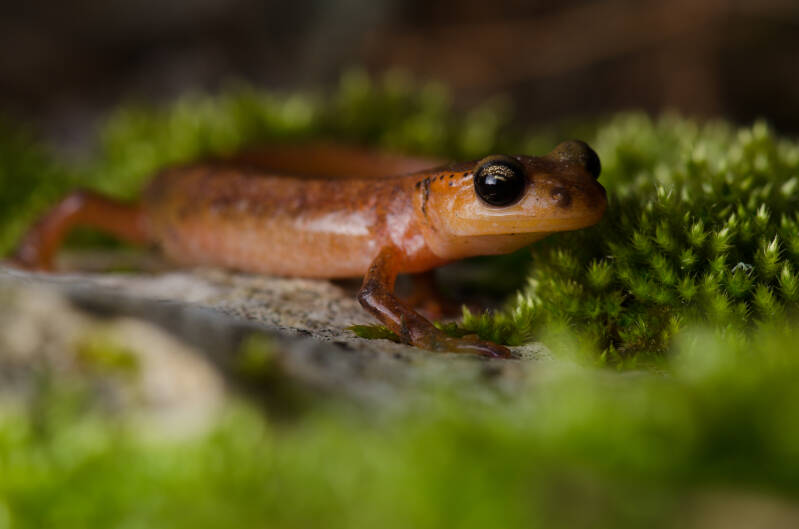
























Create Your Own Website With JouwWeb